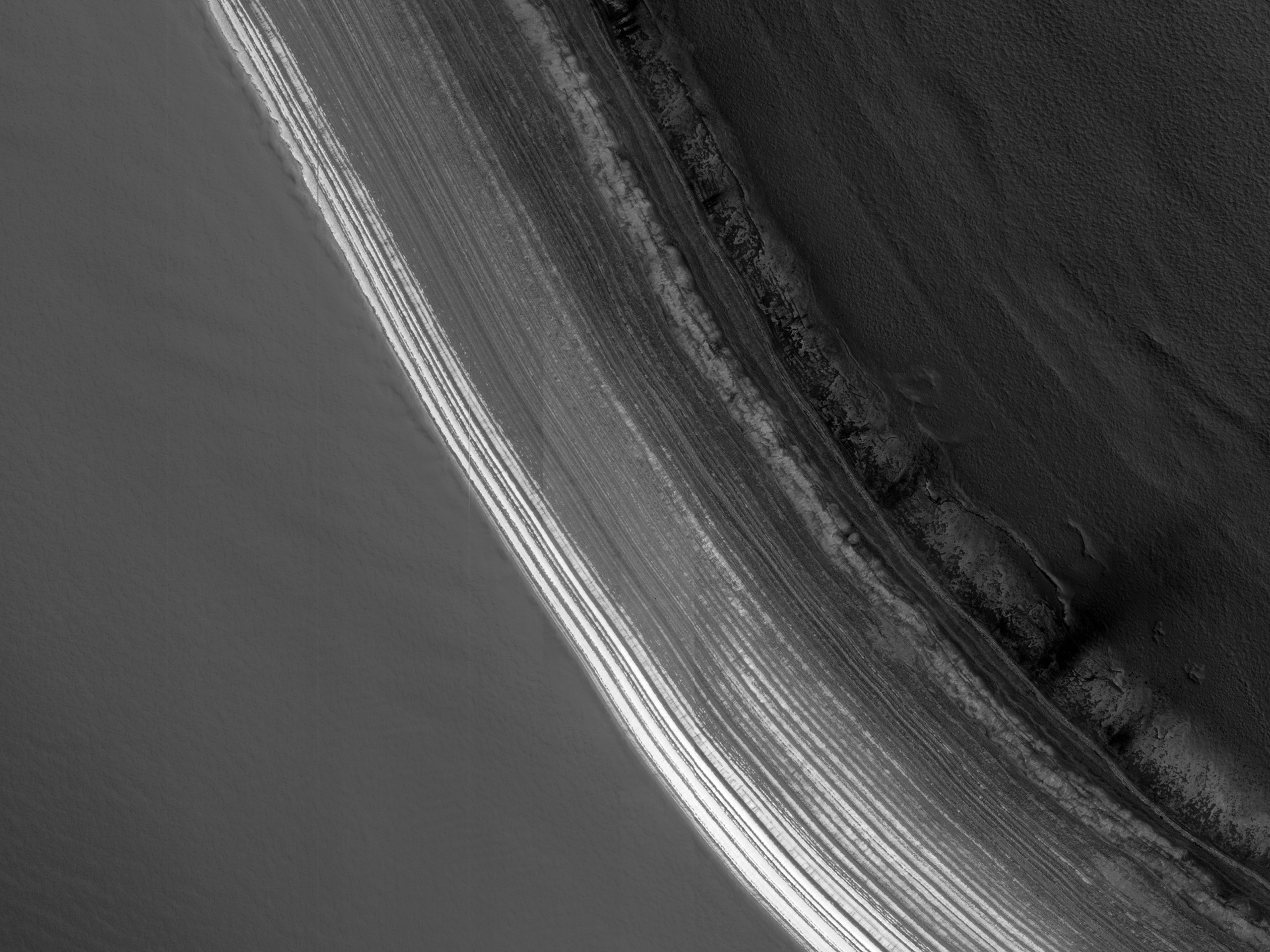
| In Search Of...Avalanches
Our science goal is to monitor for avalanches. This area has fan deposits suggesting the likelihood of recent avalanche processes happening here. The location can help to test the role of carbon dioxide disappearance as an avalanche trigger. If there is any change detected, we want ot be best able to measure how much. |
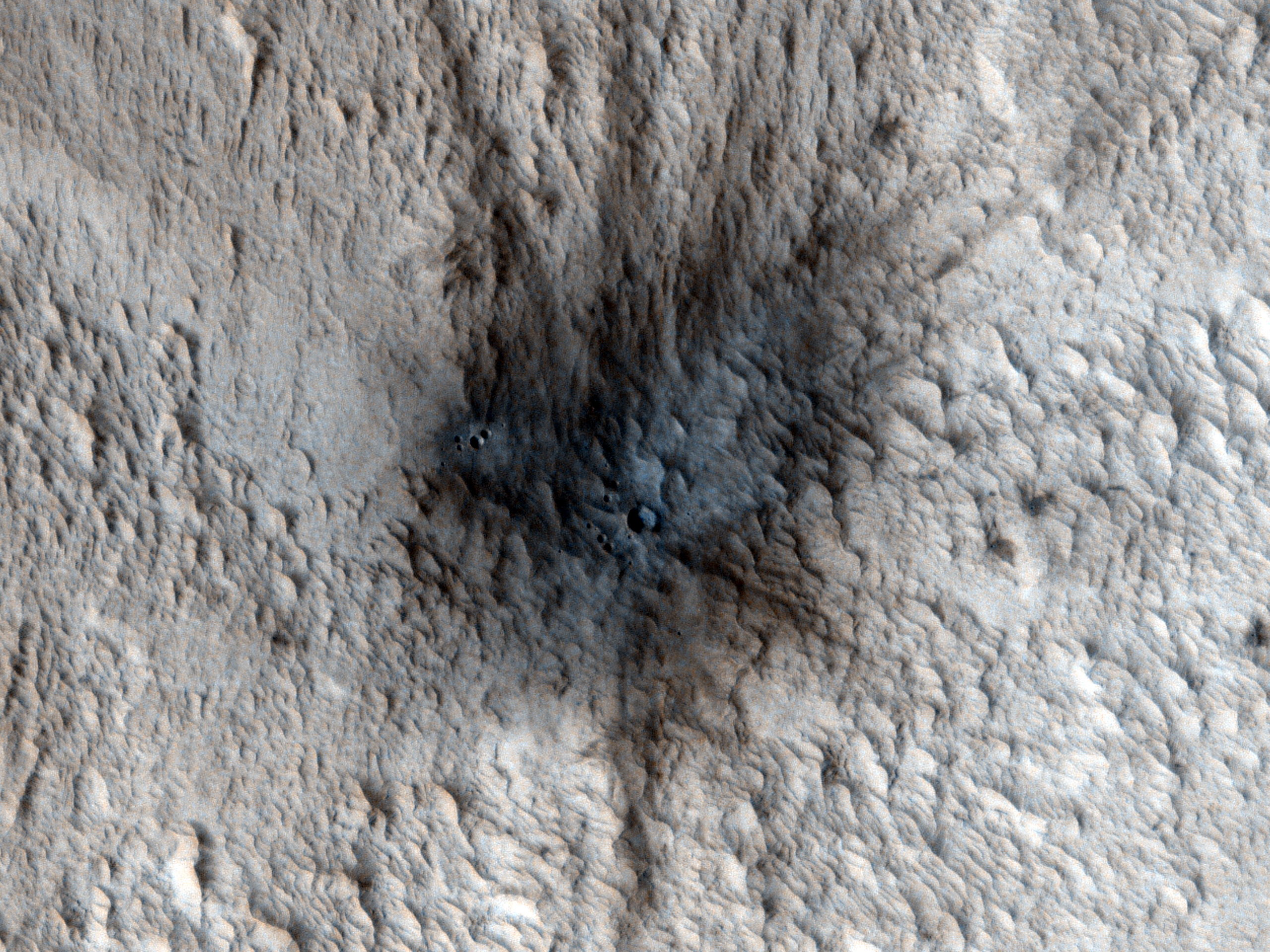
| In Search Of...a Recent Impact Site
Context Camera data shows a dark blast zone in one image that was not present in an earlier picture, constrained to less than one Mars year (which is two Earth years). When this occurs, HiRISE is often requested to target such features to examine if the feature might be an impact crater, such as we see here in full resolution, along with other, smaller impacts that could be secondaries. The dark ejecta will fade over time. | 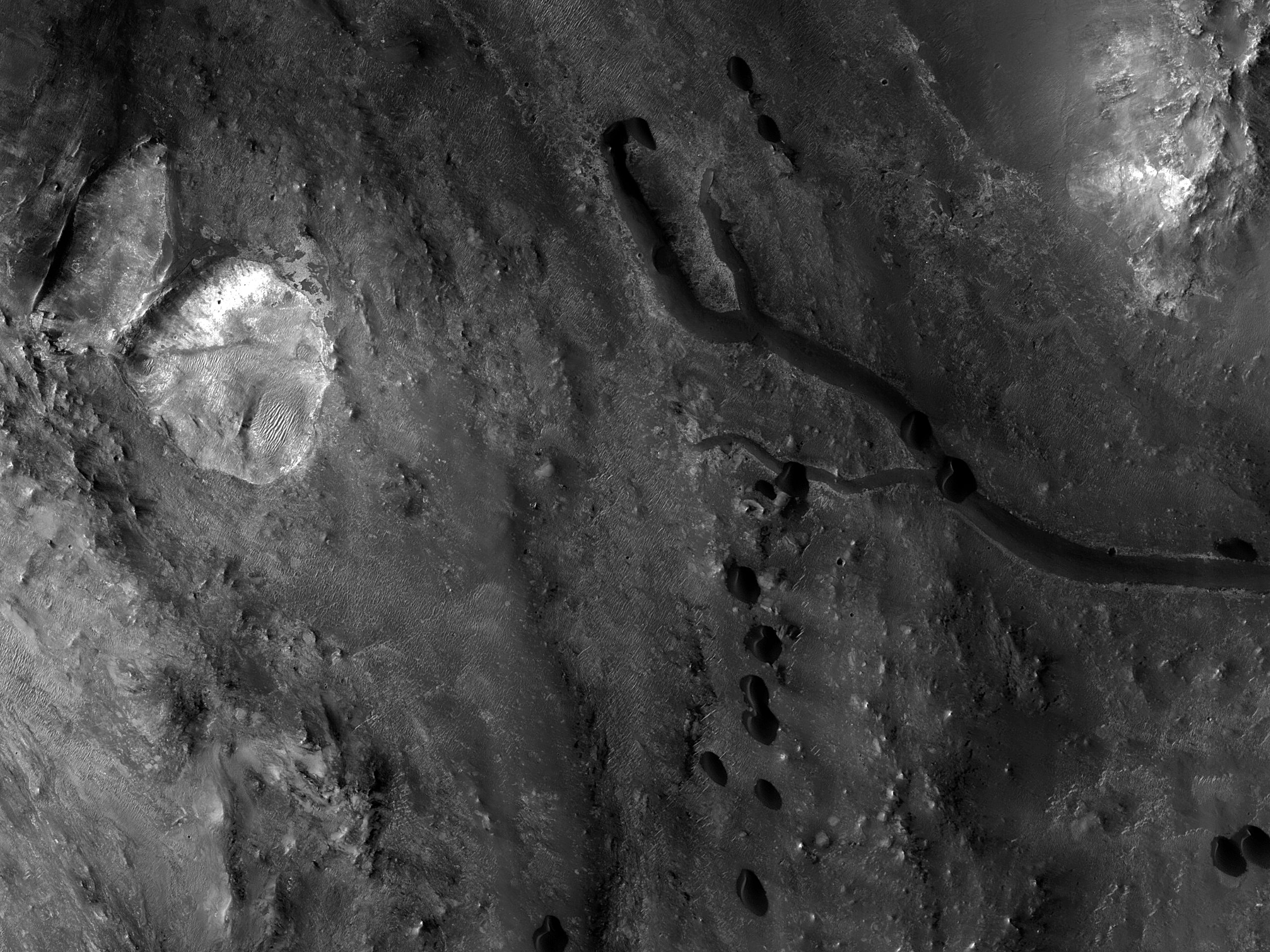
| In Search Of...the Pathway of Sand
Also visible in Context Camera image data, the objective of this observation is to examine a small field of dark dunes within an impact crater. The location of this observation is to the west of Jezero Crater, where the Perseverance rover is currently exploring. | 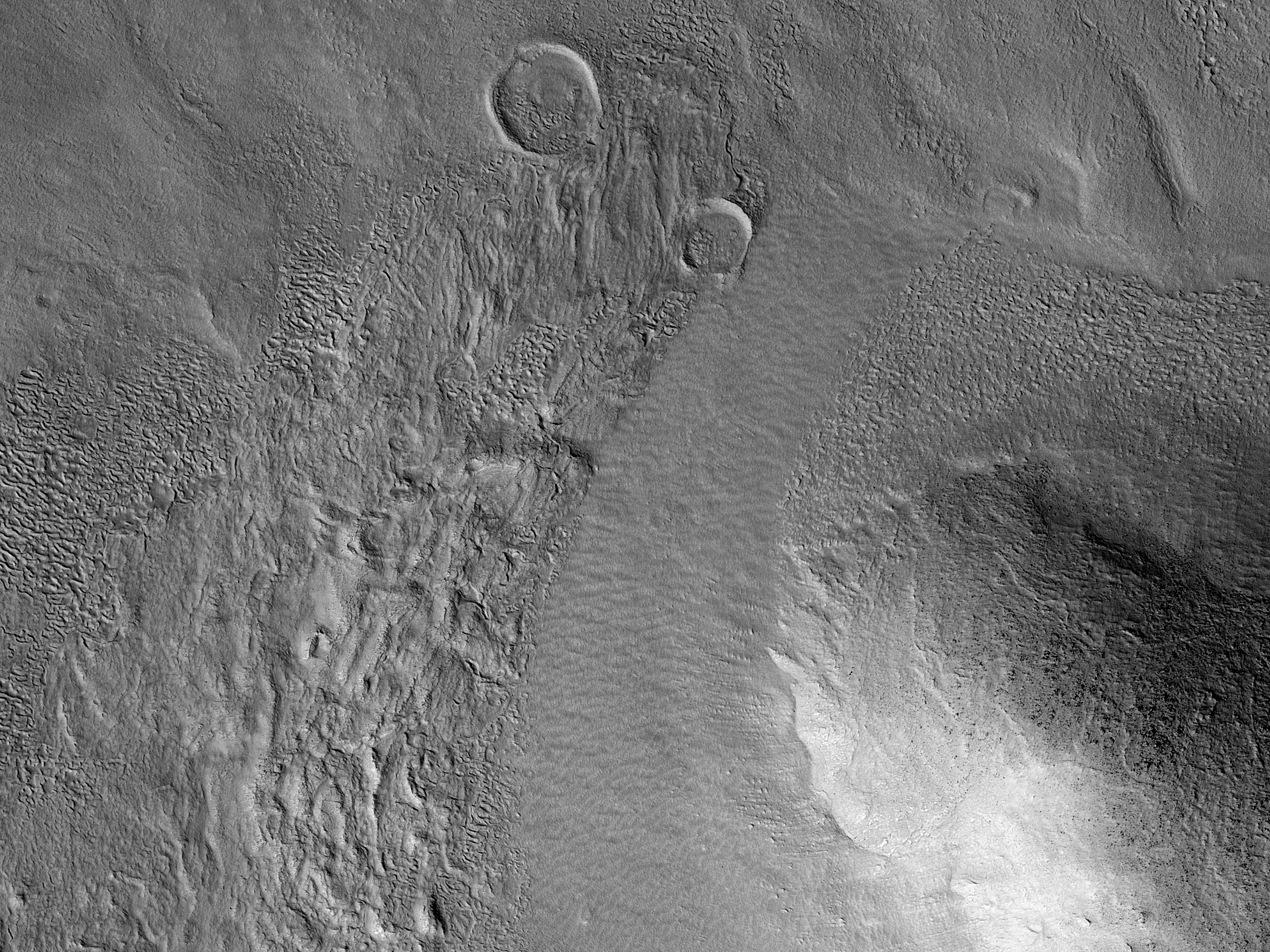
| In Search Of...Fluvial Erosion
Our science goal is to observe possible fluvial erosion that could help us to understand the climate history of this region of Phlegra Montes. A Context Camera image and previous HiRISE images show faint, but possible channels. The Phlegra Montes are a system of eroded massifs and knobby terrain in the mid-latitudes of the Northern lowlands of Mars. | 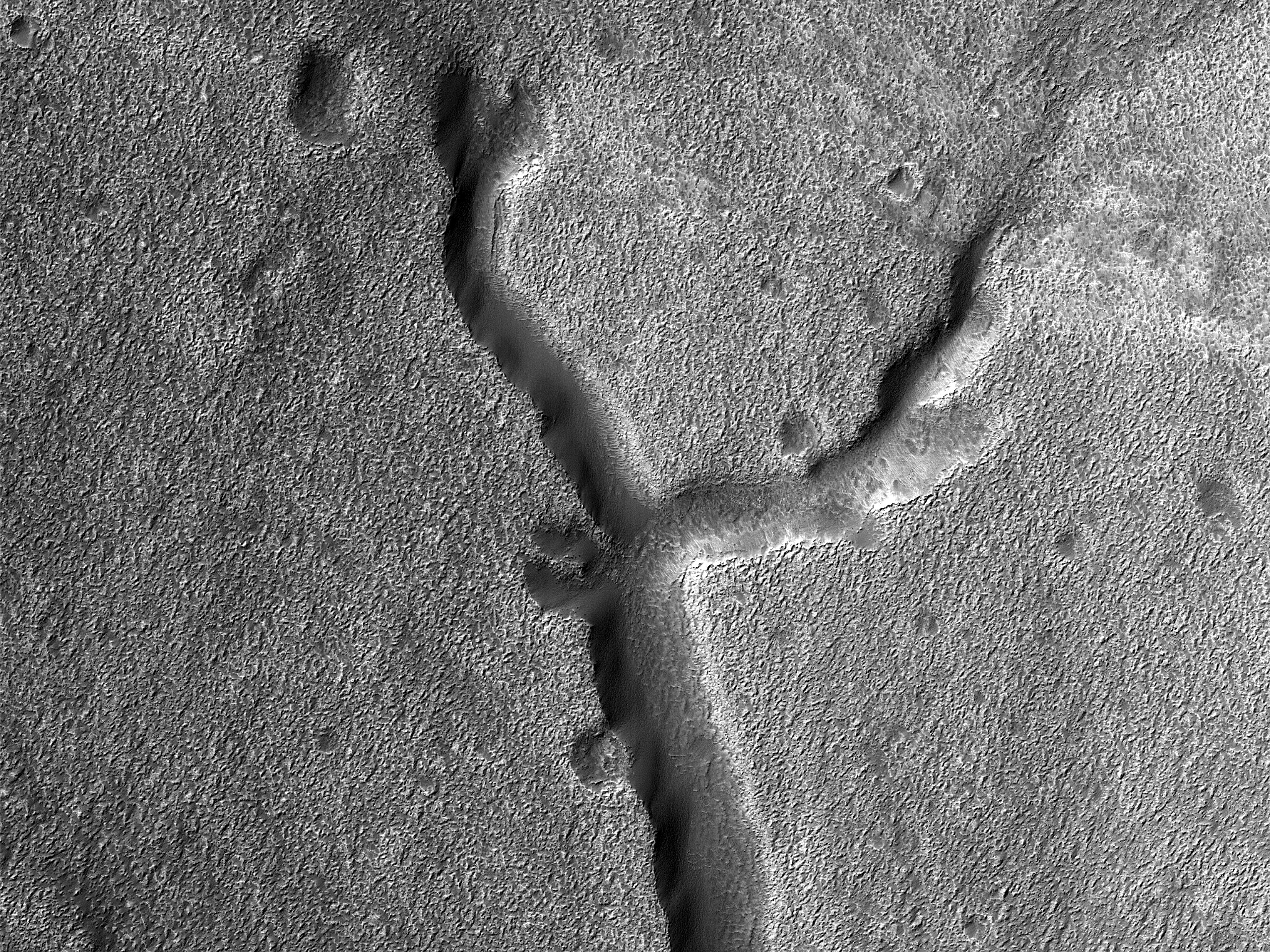
| In Search Of...Channel Heads
Do channels found within Newton Crater resemble subglacial channels? Are these channel heads consistent with sapping? Our observation can help to get slope measurements of the channel, especially with a stereo pair. Newton has a diameter of about 300 kilometers, located south of the planet’s equator. |